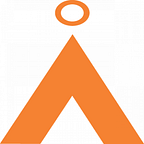Agastya Impact Story: Seema Sheikh
17-year-old Seema Sheikh, a former Young Instructor Leader (YIL), is currently in the first year of a bachelor’s degree in nursing from PES Medical College in Kuppam, Andhra Pradesh. She wants to work in the anaesthesia department of a hospital after completing her courses.
“Anaesthesia means loss of sensation in the body. I want to work in that field, as it has a lot of growth and demand,” she explained excitedly. “People want to make every medical procedure free of pain.”
Seema is the oldest of three children, and her mother runs a snacks and kebab shop from the veranda of their house in the village of Thumsi, Andhra Pradesh. Her exposure to Agastya began at a young age. Even though she was only in the third standard at Mandal Parishad Prathamik Pathshala in Thumsi when she first visited campus, she had already heard about it from her seniors.
“We used to fight with our teachers to take us to the Agastya campus as well,” she explained.
Her first visit to the campus was a memorable one.
She first visited Guru Gruha — Agastya’s astronomy lab, which has a large free-hanging model of the solar system suspended from the ceiling — and watched several videos about the solar system.
“I knew about the sun, moon and stars, but it was the first time I saw the entire solar system with its other planets,” she recalled. “We also saw the paths and speeds of different planets as they orbited the sun. I was so happy seeing it.”
In the second half of the day, she and her classmates met several instructors in the auditorium. Each student had to stand on the stage and introduce themselves one by one. For the young Seema, it was nerve-racking. But over successive visits to the Campus Creativity Lab, her confidence soared.
“At that time, we were all scared to stand in front of others and talk,” she said. Today, standing on the stage and talking to people is my favourite activity.”
She enjoyed visiting the campus and interacting with the Agastya instructors, so much so that “if [she was] told that we are going to the Agastya campus, [she] would not get sleep due to [her] excitement.” Her enthusiasm and aptitude for science only grew with every passing visit to the campus. In the seventh standard, she learnt several science concepts like acids and bases, phases of the moon, natural colour extraction from flowers and turmeric, and many more, with the help of models and materials. Her love for Agastya was so strong that she began to miss the campus sessions while on lockdown due to the Covid-19 pandemic.
“I used to ask [an Agastya instructor] when he would next call us to the campus,” she recalled.
The unique YIL experience
Seema’s limitless potential was identified early on and she became a Young Instructor Leader (YIL) when she was in the eighth standard at AP Model School in Santipuram, Andhra Pradesh, one of just nine YIL’s from her class of 80 students.
“I did not know what a YIL was, other than what our seniors said, which was that it was like a badge for being a good student,” she recalled. “I was very happy but a few of my classmates and friends were upset. I told them not to feel bad, and that whatever we learnt, we would share with them.”
Although Seema had been to most of the labs on the Agastya campus, there was a special lab only for YIL students, so it was a completely new experience for her. She and her fellow YILs began every session with meditation, followed by watching a motivational video. Then, they used to either study different topics in a practical way or engage in activities like group discussions or poster making.
“We never memorised any formulae while learning math in the YIL lab but learnt using mathematic models,” Seema explained. “Later, each one of us would share our learning with the rest of the class. I loved the way the friendly Agastya instructors interacted with us. They taught us even difficult topics in a very easy way.”
For Seema, peer-to-peer teaching was her favourite part of Agastya sessions. When she first entered the YIL programme, she was afraid of sharing her ideas, but she quickly became more confident and assertive.
“Before, I was so scared to talk to people in case they laughed at me,” she said. “But after YIL sessions and practicing speaking in front of the class, my communication and confidence both improved.”
Her newfound public speaking and teaching abilities came in handy when she partook in Agastya’s Math Day celebrations, which took place in the auditorium over the course of three days with several students from other schools and foreign visitors in attendance.
“I was a group leader and explained the concept of Ramanujan’s number and how he arrived at it,” she said. “I felt like a fellow teacher and was very happy. I think peer-to-peer learning is my most valuable takeaway from Agastya, as I continue to use it even in college.”
Her confidence and love for giving back have aided her at university so far. She is among the very few students in her class in college who do not hesitate to walk up to the blackboard and explain a topic. She credits this largely to her experience with Agastya.
“As a YIL, I was trained to share my learnings with others,” she explained. “I would love to always keep this connection with Agastya.”
